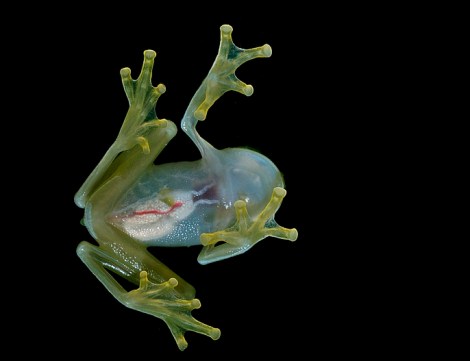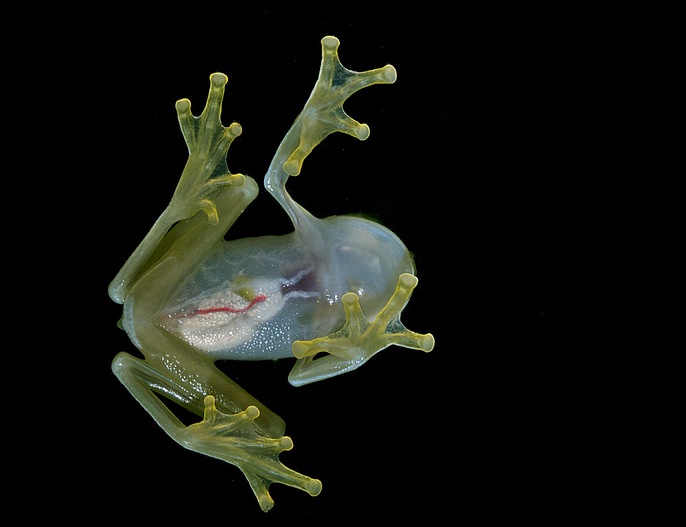
Photo by Geoff Gallice.
Man, how much easier would high school biology have been with the glassfrog? Instead of having to dissect a dead animal, you could have just peered through its naturally transparent belly. It’s quicker, cleaner, and has a seriously reduced chance of some douchebag putting a spleen in your hair.
io9 talked to an evolutionary biologist to figure out why something like this would even exist, given that making 10th-graders’ lives easier is not normally considered an adaptive trait. It turns out science really does not know. But there are two main guesses: The transparent belly could make it easier for the frog to maintain its internal temperature, or it could improve camouflage.
The glassfrog’s liver and digestive tract have light-reflecting cell structures called iridophores, which could protect the frogs from getting internal sunburn. It’s possible that these small areas of opacity make it easier for the frogs to maintain a consistent internal temperature than a totally solid belly — like having a scarf you could wrap different parts of your body in, instead of wearing a heavy coat. Or their transparency could let the frogs blend in to the leaves, thus fooling predators. But neither hypothesis has been confirmed.


